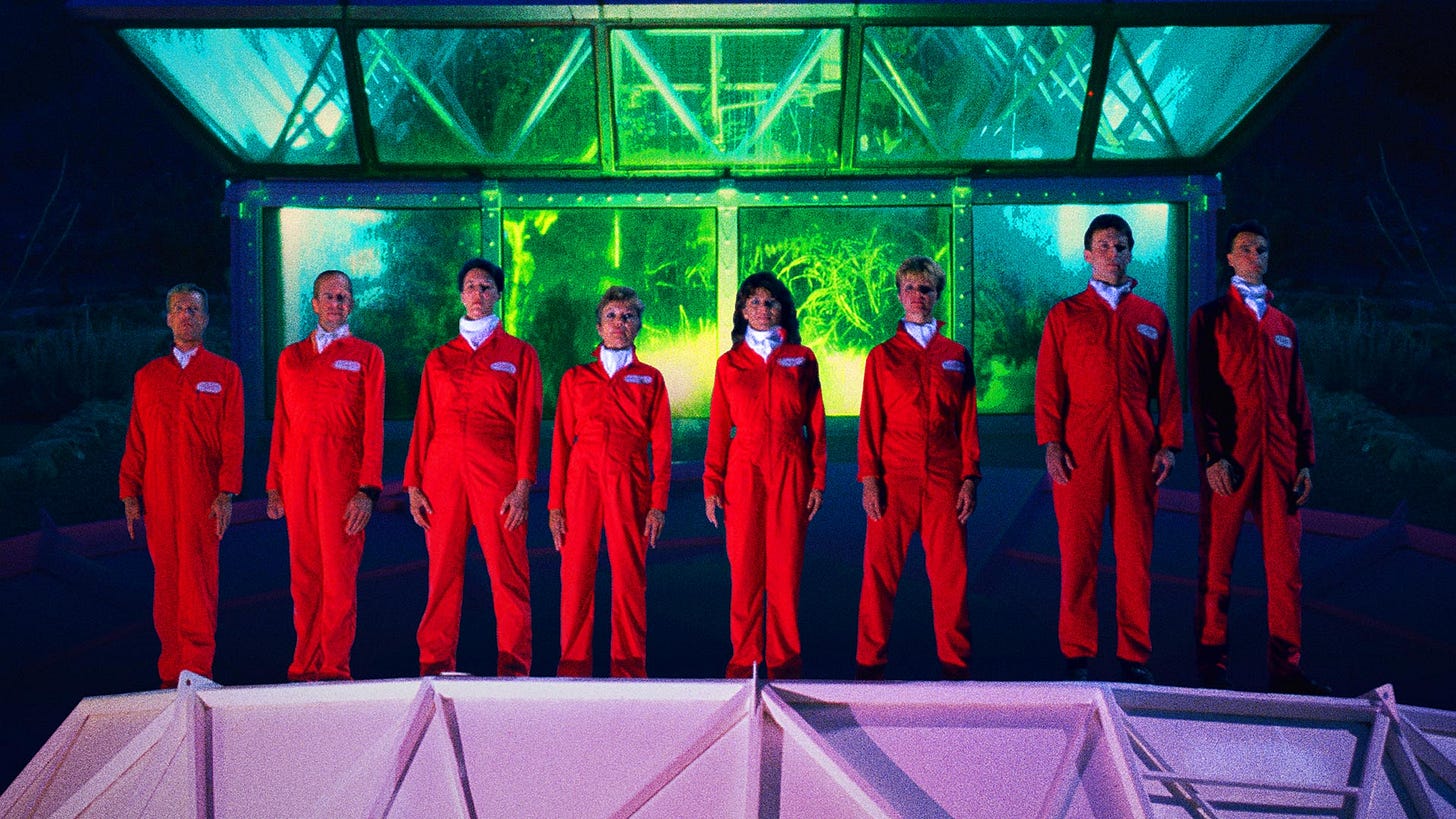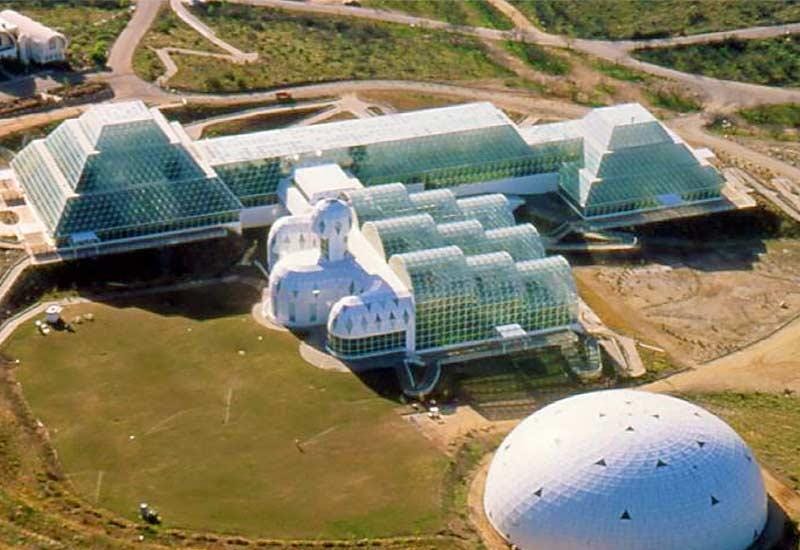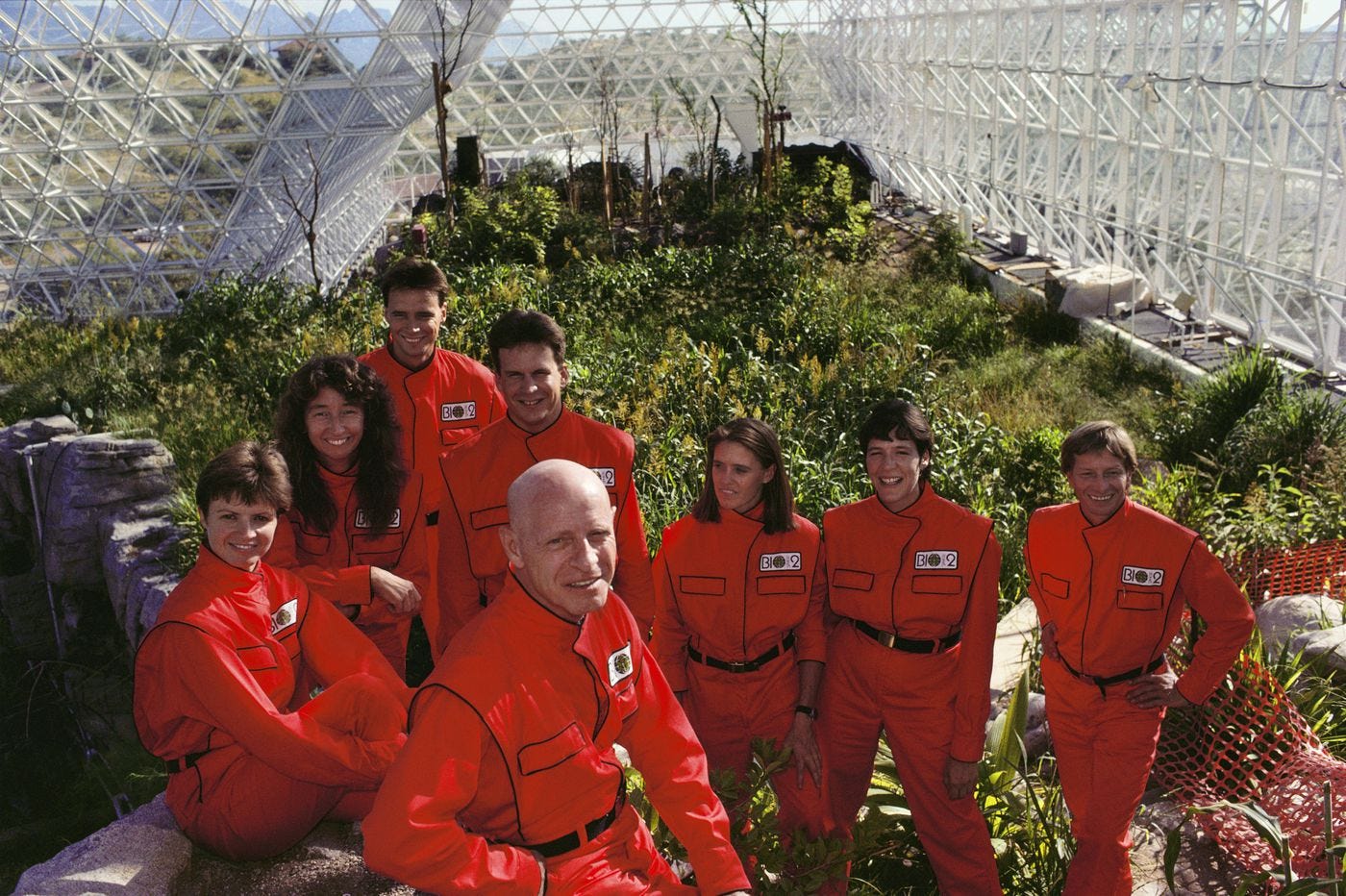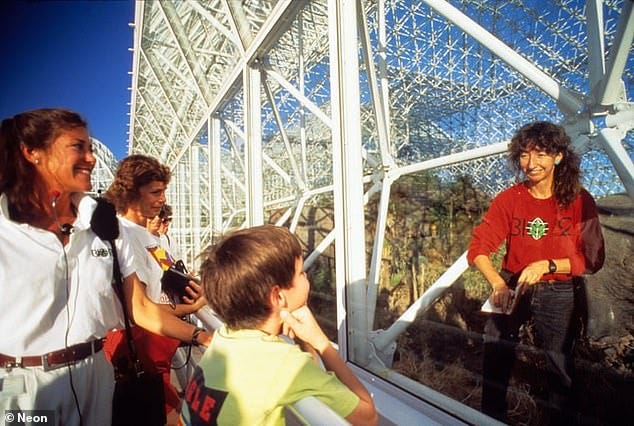Hulu Documentary ‘Spaceship Earth’ And The Limitations Of Utopian Thought
Reflections on environmentalism and white privilege

Note: Photo credits belong to NEON
The overwhelming whiteness of American environmentalist culture was never lost on me. It first dawned on me during childhood hiking trips as the only Asian in the woods. During college, it occurred to me again as one of the few non-White students in my environmental studies courses. And now, I confront it every single day as an early career environmental journalist navigating a beat governed by White editors.
If these moments are subtle reminders that my yellow body does not — and never did — belong in American environmental spaces, then Matt Wolf’s Hulu documentary ‘Spaceship Earth’ is a violent wake-up call.
‘Spaceship Earth’ is a story that follows an environmentally conscious New Mexican commune and theatre production group who aspires to escape this melting planet to sustain life on mars. To prepare for that mission, they built the Biosphere 2 (Biosphere 1 being planet earth) — a self-sustaining enclosed ecological system. It included seven distinct biomes, an agricultural area for food production, a workspace, and a living quarter. A crew of eight scientists (known as biospherians) were selected to live and conduct research there for two years.
Ultimately, the Biosphere 2 was an unprecedented ecological experiment designed to study human life in a new world, a simulation for what life on mars may look like.
Although the documentary captivated me with its aspirational tale of interplanetary domination, it’s depiction of unchecked White privilege enraged me to the point of no return. If the future of our planet is dependent on expensive utopian projects funded by rich White dudes, then we are all doomed.

The first hour of the documentary explores the emergence of the commune, contextualizing the ambition that inspired the Biosphere 2. Founded in the 1970s by commune leader John Allen, this eccentric group embarked on a number of projects before deciding to build an ecological simulation. Learning architecture and engineering skills on the job, the commune successfully built a theatre, and then a massive ship from scratch.
After an hour of me wondering how these hippies paid for these seemingly expensive projects, the film later reveals that the projects were funded by oil heir and billionaire Ed Bass.
Fast forward to the late 80s, when a revelation on the urgency of human-driven climate change inspired the commune to construct the Biosphere 2. Five years (between 1987 to 1991) of construction, preparation, and widespread media coverage later, the experiment was ready to begin.
Long story short, the experiment was a colossal failure.
The once bountiful ecological prototype for a brand new world became a post-apocalyptic hellscape. Crops died, excess nutrients polluted water systems, and dangerous levels of carbon dioxide saturated the air, suffocating the biospherians during their stay.
The experiment was also plagued with ethical and scientific concerns. Subjects were purposefully starved for data, a carbon dioxide extractor was found and only utilized when leaked to the press, and the science community expressed skepticism over the integrity of the project. After the experiment was over in 1993, John Allen sold the Biosphere 2 to former White House chief strategist Steve Bannon. It is now a museum and research center owned by the University of Arizona.
What was once a spectacle of public curiosity and scientific inquiry became an archaic reminder of an unfortunate past.

The overwhelming whiteness of the project was blinding. The entire commune was White, all the biospherians were White (was it really that hard to find a scientist of color?), and the only BIPOC on-screen were a group of curious Black tourists from Brooklyn. The lack of diversity wasn’t surprising, though. I mean, what person of color in the late 1900s would casually have friends who hold a fortune of intergenerational oil wealth?
The exclusion of BIPOC from the experiment is problematic, given the purpose of the project was to imagine life after death; the continuation of human existence after the planet incinerates. If the project is a reflection of what the future will look like, does that mean BIPOC are excluded from it? And are White people with capital the only ones who can imagine a solution to the climate crisis?
I do not tolerate a future where life and death is contingent on racial and economic privilege.

The underlying idea of utopian projects is that the world we currently live in is damaged. That to improve its conditions means to radically reimagine the world we want to live in, and to do anything in our collective power to work towards that goal. In the case of ‘Spaceship Earth’, however, their vision of utopia doesn’t mean improving the current conditions of our world, but escaping it to build an entirely new one. A solution to escaping the environmental damage of global warming, in the eyes of Ed Bass and John Allen, means cultivating life on another planet — an option unthinkable to the majority of the world.
If the Biosphere 2 was actually successful, who would its findings benefit? Definitely not the average person, assuming that a one-way ticket to mars would probably cost an ungodly amount of money (remember the woman who spent $250,000 to travel into space for a whole five minutes?) And definitely not the science community either, given the financial infeasibility to replicate the experiment for additional trials.
So if the experiment cannot not generate scientific research, nor is it inclusive, then it’s findings were only meant for the wealthy. Specifically, they are meant for rich White people who have the privilege of dishing out an exorbitant amount of money into an extravagant project with no basis in material reality; a project only a straight White man with unbounded ego can imagine to be a viable solution to climate change.
Regardless of how “environmentally conscious” fossil fuel king Ed Bass claims he is, does he really think it’s possible to migrate billions of people to another planet once the earth melts? I highly doubt it. In fact, I don’t even think he considered that.

Assuming he embarked on this project without considering concerns over equity, the Biosphere 2 demonstrates how privileged White people weaponize environmental consciousness to serve their own personal agendas. In Bass’s case, the construction of the Biosphere 2 signals a grandiose vision and level of ambition that transcend the possibilities of human creation — traits that feed the ego and seduce the public eye. It allows him to shed his identity as an oil mogul, and to lean into the identity as an environmental steward. Thus, the project was less about building a better world, and more about optics; a publicity stunt disguised as an utopian, innovative vision for the future. As a guy featured on ‘Spaceship Earth’ puts it, the Biosphere 2 was merely “trendy ecological entertainment.”
The immense privilege and financial waste of the Biosphere 2 vision is amplified when positioned in the environmental concerns of that time, ones that persist to the present. Communities of color redlined near industrial facilities continue to face lethal levels of air pollution, Indigenous folks are still losing their sacred land to natural resource extraction, low-income communities are at high-risk of displacement due to a predicted increase in extreme weather conditions — the list goes on.
If the commune cared as deeply about environmental issues as they purported to, why not invest in the people most impacted by them? Money spent on people-centered projects (like public transit renovations, sustainable, rent-controlled housing, and the protection of public lands to name a few) that improve the environmental and material conditions of everyday life would bring us closer to a utopia than a mass of glass in the middle of rural Arizona ever would.

We cannot allow projects like the Biosphere 2 and contenders like Elon Musk’s SpaceX to set a precedent for what is possible. If we do, then there will be clear winners and losers when the planet erupts into flames by 2050. The winners will be chilling on Mars eating shitty space food, while the losers will be left on earth to burn. Until we pivot away from lofty, sci-fi-esque visions of a sustainable future, the most marginalized will be left behind.
This isn’t to say that the quest for scientific discovery and technological innovation is futile, but that working priorities towards a green utopia need to recalibrate. The scientific evidence and technology needed to mitigate the impact of global warming already exists. It’s the political power and social consciousness required to implement those solutions that don’t. Maybe we should focus on growing the latter.
I don’t know who needed to hear this, but this is the only world we got. There is no Planet B. And a future on another planet led by arrogant, wealthy White folks disguised as environmentalists is one I don’t want to be a part of.



